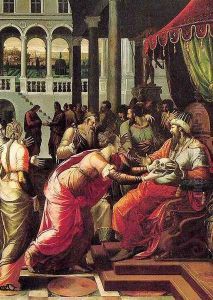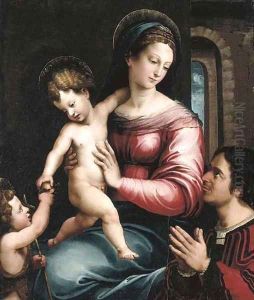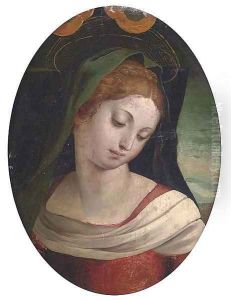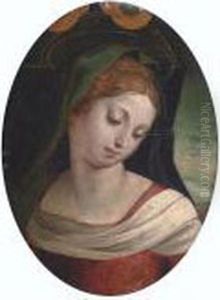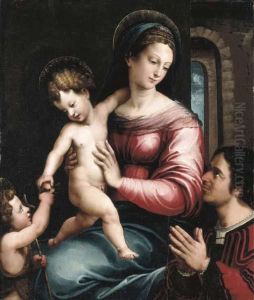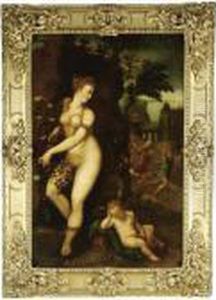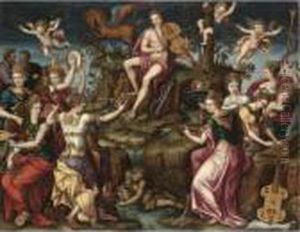Luca Penni Paintings
Luca Penni was an Italian painter and draughtsman, active during the Renaissance period. Born around 1500 or 1501 in Florence, Italy, Penni came from a family deeply involved in the arts; his brothers, Gianfrancesco Penni and Bartolommeo Penni, were also painters, which highlights a familial lineage of artistic talent. Luca Penni is often associated with the Roman school of painting, having spent a significant portion of his career in Rome, which was then a vibrant center for artistic creation and innovation.
Penni's journey into the arts led him to Rome, where he became a part of the circle around Raphael, one of the most illustrious artists of the time. Although not as widely recognized as Raphael, Penni was influenced by him and worked in his workshop. This experience allowed Penni to develop a style that, while bearing hallmarks of Raphael’s influence, also incorporated his unique interpretations of classical and contemporary themes. After Raphael's death in 1520, Penni continued to work in Rome, contributing to various projects and honing his skills in fresco and oil painting.
In the mid-16th century, Penni moved to France, where he became involved in the burgeoning artistic scene at the Fontainebleau court, an important center for the Italian Renaissance style outside Italy. There, he worked alongside other notable artists such as Rosso Fiorentino and Francesco Primaticcio, contributing to the development of what would become known as the School of Fontainebleau, which blended Italian Renaissance techniques with French artistic traditions. Penni's work in France marked him as a significant figure in the spread of Renaissance ideals beyond Italy, influencing a new generation of artists across Europe.
Despite his contributions, Luca Penni's work has often been overshadowed by that of his contemporaries and even his brother, Gianfrancesco. His surviving works include a mix of religious and mythological themes, showcasing his adeptness with both the human form and narrative storytelling. Penni's art is characterized by its elegance, refined use of line, and the subtle emotional expressions of his figures, hallmarks of the classical Renaissance style.
Luca Penni died in 1556, leaving behind a body of work that, while not as extensive as some of his peers, played a role in the dissemination of Renaissance art and ideas. Today, scholars recognize Penni's contributions to the art world, noting his role in the development of the Renaissance style in France and his influence on the transition of art from the High Renaissance to Mannerism. His works can be found in various museums and collections, serving as a testament to his skill and artistic legacy.
